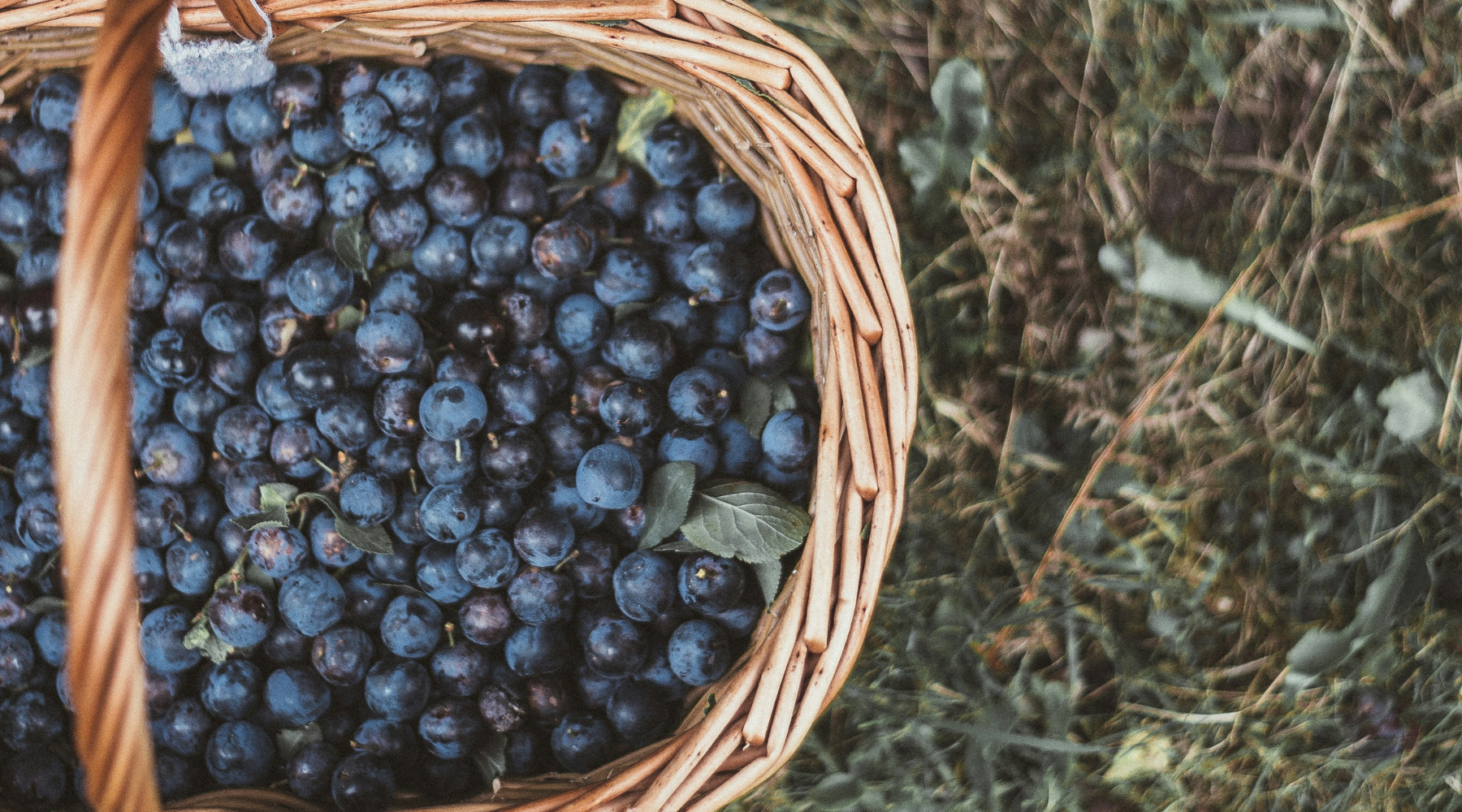Autumn is a time of magic in the countryside. If spring brings a sense of hope, then autumn embodies abundance. The hedgerows, woods, and meadows are bursting with a seasonal harvest, waiting to be discovered by those who know where to look.
Foraging has become increasingly popular, not only for the joy of collecting your own food but also because it allows you a chance to slow down, connect with nature and discover seasonal delights that can only be found in the wild.
This autumn, keep your eyes peeled for some of nature's finest offerings: cobnuts, sweet chestnuts, rosehips, and nettles.
.png) Cobuts or Cultivated Hazelnuts
Cobuts or Cultivated Hazelnuts
Cobnuts
Cobnuts, a cultivated variety of hazelnut, are a delight to find in the wild. Their sweet, nutty flavour is perfect for autumn recipes. These nuts can be found hanging from hazel trees in woodlands or hedgerows from late August into October. When harvesting cobnuts, look for those that are still green, with their outer husks slightly dried but not completely brown. Once gathered, they can be eaten fresh or stored to dry for a more concentrated flavour.
Cobnuts can be used in both sweet and savoury dishes. They can be tossed into a salad for added crunch, roast them alongside root vegetables, or blend them into a homemade nut butter. Their buttery texture and rich flavour make them a wonderful ingredient for autumn baking and taste particularly good with chocolate or apples in cakes and biscuits.
.png) Sweet chestnuts
Sweet chestnuts
Sweet Chestnuts
The woodlands of the UK offer one of the ultimate autumn treats in sweet chestnuts. Found in large, spiky green husks, these chestnuts are ready to harvest from October. When collecting sweet chestnuts, look for those whose shells are easy to open and firm to the touch. The nuts inside should be a shiny, reddish-brown colour and free from soft spots.
Roasting chestnuts over an open fire is not just for Christmas, roasting brings out their sweet, creamy flavour and they are then perfect for stuffing into meats or adding to casseroles and stews. They can also be used in baking as a chestnut purée. If you don’t fancy roasting them whole, they can be boiled and peeled for other uses.
Don’t mix up sweet chestnuts with horse chestnuts. Horse chestnuts may be great for playing conkers but should never be eaten.
.png) Rosehips
Rosehips
Rosehips
The bright red rosehips that adorn hedgerows from late September onwards are not only beautiful but also packed with vitamins, particularly vitamin C. Rosehips have a tart, tangy flavour and are best harvested after the first frost, which softens them and makes them easier to work with.
Rosehips are often made into syrups, jellies, or even teas. Simmer them with sugar and water to create a deliciously tangy syrup which can be used to make tea or mixed with sparkling water, added to vinaigrette dressings for autumn salads or as a marinade for meat. Be mindful to remove the seeds, as they contain tiny hairs that can be irritating if consumed. Their vivid red colour and zesty taste also lend themselves well to chutneys, pairing particularly nicely with game meats or cheese.
.png) Nettles
Nettles
Nettles
Often considered a nuisance, nettles are actually one of the most versatile and nutrient-packed wild foods available in the UK. Their earthy, slightly spinach-like flavour is perfect for soups, pestos, and teas. Nettles grow in abundance throughout most of the year, but autumn’s cooler weather is a great time to harvest their tender, younger leaves.
When foraging for nettles, wear gloves to avoid their famous sting. Harvest the young tops of the plant, as they will get more tough and bitter as they age. Once cooked, the stings are neutralised, leaving you with a mild, nutritious green. Nettles are rich in iron and calcium, making them an excellent (and free!) addition to your diet. Try incorporating them into a nettle soup, adding them to a risotto, or blending them into a pesto with garlic and lemon.

Forage With Care
When foraging, follow these rules to keep yourself safe:
If in doubt, leave it out.
Never eat any foraged plant unless it has been correctly identified as edible. Some plants are poisonous and look very similar to edible ones, so proceed with care. Always check that you do not have any sensitivities or allergies to the ingredient before using.
Leave no trace
Never forage without the landowners permission and avoid straying from footpaths and bridleways. Never take more than you need - always leave enough for wildlife to enjoy, birds, small mammals and other animals rely on nuts and berries at this time of year.
Keep it sustainable
When harvesting, never take more than 10% of a plant or its fruit from any one area to ensure the plant population can continue to thrive. Avoid uprooting plants unless it's necessary and permissible, and make sure to harvest only what's abundant.
Pure and natural
Avoid picking any plants from polluted areas, such as alongside roads or in places frequently used for dog walking. Always wash your foraging finds thoroughly to remove dirt and potential contaminants before cooking.
.png)


.png )

